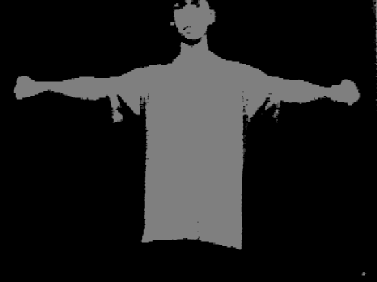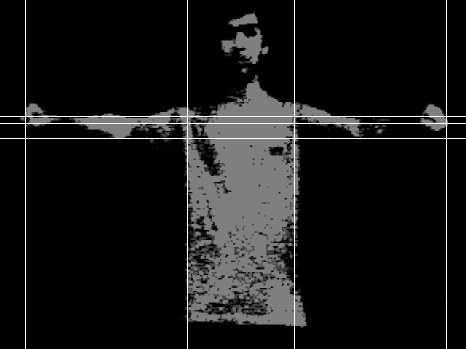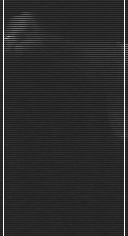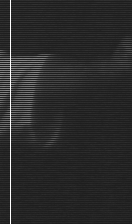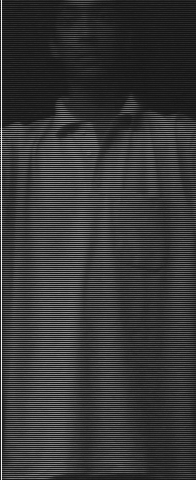| METHODOLOGY
The
methodology I used for hand tracking
in real time is the following :-
The image sequences with the
user moving his hands are captured and the image processing method described
below is applied to all these images.
BINARIZING THE IMAGE
- The images are binarized using an appropriate threshold value. This removes
a lot of background noise .
SMOOTHING AND OPENING
- The binarized image is smoothened using a standard gaussian convolution
matrix . Opening consists of looking upon the neighbouring pixels and opening
that pixel . It is actually erosion followed by dilation. Though these
convolution operations effectively removes a lot of noise, they are time
taking. For many backgrounds (like the black background I am using
) these are not necessary and hence I am leaving this option to the user.
CALIBRATION:-
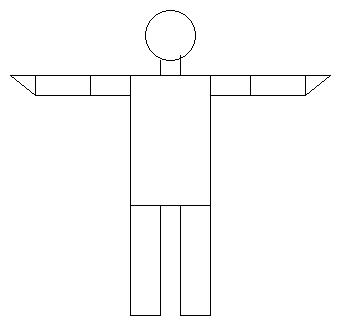
Initial pose of the user
In the beginning the user is
made to stand with his arms wide apart. This position is used for calibration
i.e. finding out user's shoulder tip position , armlength and forearm
length. I am doing this in the following way. By scanning from two extreme
ends of the image , I try to locate the first few pixels of high
intensity. Since the background noise has been eliminated , and the user
is standing with his arms wide apart hence these pixels correspond to those
of user's wrists. Using this therefore , I get the x coordinates of the
wrist. Now the x coords are used to locate the y coords in the following
way. Consider a strip of small width having the above as x coords. In this
strip I locate the high intensity pixels and they give the y coord of the
wrist. Shoulder strip is located using statistical data about human body
distances.
Now arm length is found using
above data. The calibration is now complete.
TRACKING HAND :-
Hand tracking is done in the
following way. The extreme tips are located using the above procedure.
This might either correspond to the user's wrist or the elbow. Since I
already know the armlength , forearm length using statistical data, I calculate
the distance of the located tip from the shoulder and compare it with upper
arm length. Now there are two cases that can arise :-
Case 1: The distance of
the located tip is greater than upperarm length. In this case the located
tip is the wrist. I use geometry to locate the elbow joint and using some
image processing I resolve any ambiguity that may arise.

Case 2: The distance of
the located tip is lesser than upperarm length. In this case the located
tip is the elbow joint. This also means that arm is folded. The wrist is
now found out by looking both above and below the line joining the wrist
and the shoulder tip. This gives me the wrist position since I am not allowing
occlusion.

After location of wrist and elbow
joint , the data is fed to graphics part. Following is an example image.
GRAPHICS OUTPUT
I
had initially planned to give a much better graphics output than the one
at present. But due to some implementation problems ( shortage of memory
on host system ) I had to discard my idea. My initial plan was to do animation
using dancer images ( or drawings) with arms in various positions . But
this had a problem ; since the number of such images is limited , the continuous
data output from the image processing part had to be dicretised. In the
present case this problem is not there since the images are constructed
according to the output of the image processing part.
|




